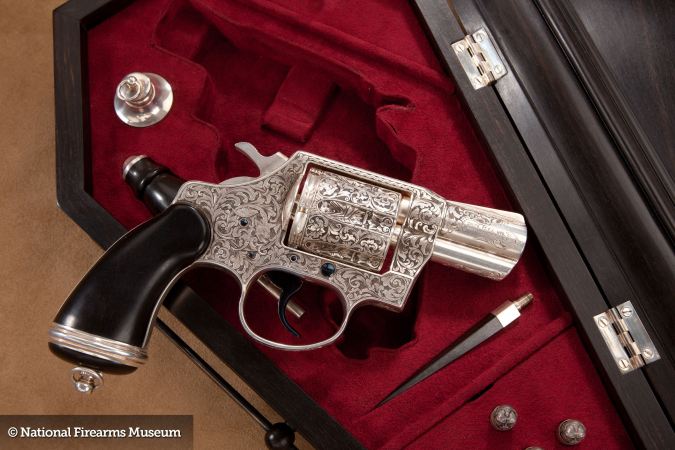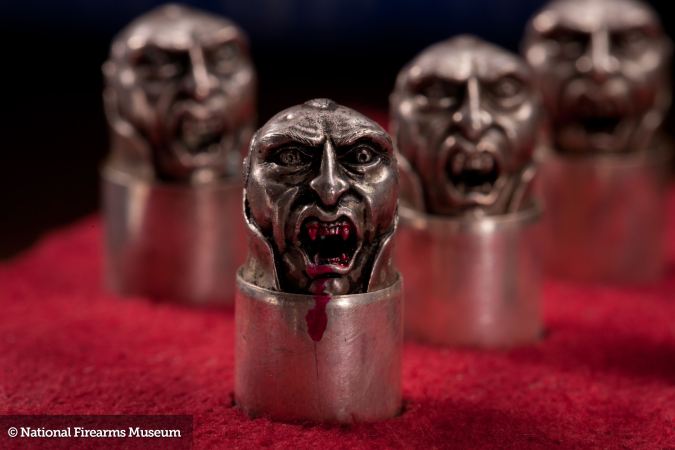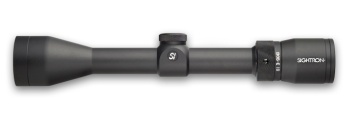We’ve moved and if you would like more stories, tech tips, tall tales and expertise, you can find us here.
Handloader or Reloader?
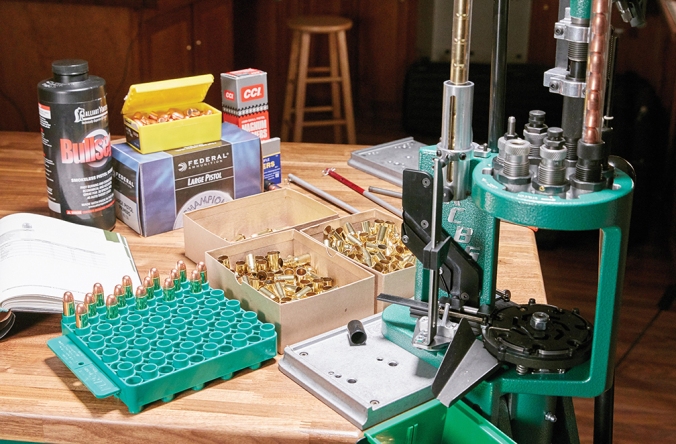
If you reload ammo, you probably fall into one of two camps, handloaders and reloaders. A handloader is someone who loads their own ammo for maximum accuracy, power and consistency. These are the guys who track down single lots of brass, use incredibly accurate scales and keep notes on loads that make NASA jealous. On the other hand, the reloader is the one who did the math on how much money reloading can save, worked up a safe and reliable load and then cranks it out by the ton. Both are great ways to get the most out of your shooting experience. I started out as a reloader, spitting thousands of rounds of .38 special wadcutters out of a progressive press, but I’m starting to handload since I love odd calibers and guns.
If you’re a reloader, here’s a few things I’ve found useful:
- While it might not make for the cheapest load, try to find a powder/charge that will almost fill the case. That way a double charge is very very obvious, and ignition is consistent as powder charges that don’t use enough of the case can cause hangfires.
- Plated bullets are awesome. Less expensive than FMJ but without the lube and potential lead exposure of lead bullets, plated bullets are a great way to shoot more. (or you could cast your own lead if you’ve got the space)
- If you’re reloading pistol cartridges, buy carbide dies. The cost difference will make itself up in just ease of use. Plus, you don’t have to lube the cases!
If you’re a handloader, here’s a few things I’ve learned the hard way:
- Primer pockets matter. Square them up, clean that flash hole and make sure everything is clean.
- The more accurate your scale is, the better your load. Lee dip cups are fine for lots of things, but to get the best accuracy, get a good quality digital scale.
- If you’re only reloading for one gun, get a neck sizing die. It keeps the case body the same size as your chamber, increasing accuracy. Plus, only resizing the neck is much gentler on the case and you’ll get more loads out of it.
We’d love to hear about your reloading experience and any tips you’ve picked up! Hit the comments or let us know on facebook.
– C Beatty
Intro to Reloading – Part 2
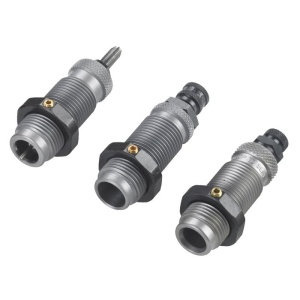
One of the few things that’s usually left out of most premade reloading kits is dies (RCBS’s AR Kit is an exception). Dies come in a dizzying assortment of sets, sizes, types and materials. Let’s get the easy differences out of the way:
Size: Outside of shotshell dies (which we’re not covering), oddball things like Dillon’s proprietary pistol dies, and antiques, dies come in two sizes, identified by their thread pattern. The standard size of reloading die is 7/8-14 and 99% of the dies on the market use this size. If a die isn’t identified as being something else, it’s pretty safe to assume it’s a standard size. The other common size is 1 1/4×28 and is used in oversized presses for reloading .50 BMG and other very large calibers.
Materials: Dies are either hardened tool steel or carbide. If you’re reloading pistol, buy carbide if it’s available. Carbide pistol dies allow you to resize without using lube, removing two steps from your reloading process, and last almost forever. If you’re reloading a bottlenecked rifle cartridge, stick to steel unless you’re reloading for Rambo.
Both carbide and steel rifle dies need lubricated cases, carbide dies just last longer. Considering most people never wear out their first set of steel dies, the advantages of carbide rifle dies are not usually worth the cost. As a side note: tool steel and carbide dies are both very strong, very precisely ground and they’ll all rust like crazy given the chance. If you’re like me and live in a humid environment, it’s a good idea to invest in airtight containers for them (either purpose built or tupperware) and some desiccant packs. I already keep a dehumidifier system going in my safe, so I store my dies in the safe when not in use. Between that and a light coating of oil, they stay rust free.
If you missed out on part 1 of our reloading series, you can find it here.
– C Beatty
Building another AR
This is too cool not to share, stop action animation of an AR assembling itself!
I recently had a good laugh remembering my first AR-15 build. I didn’t own a headlamp back then so I was reduced to holding a Mini Mag light with my teeth as I crawled around my living room floor searching for the tiny detent spring that had launched itself minutes earlier. The ghost of Eugene Stoner* was chortling smugly in my ear.
In those days (1999 or so) I was an AK man and I still considered AR-15 building a kind of dark alchemy. I was only building an AR because a co-worker had given me a used lower, thereby forcing my hand. In that era parts were still expensive and the selection was limited. A missing spring was a huge setback then. I eventually gathered my components and finished my “parts gun”. I was amazed at how accurate the rifle was. Within months I had decided I needed another one.
Today everything is different. A friend recently supervised as his 10 year old daughter built an AR by simply watching a YouTube video. During her build there were zero flying springs because the video had all the tricks to avoid these problems. It’s truly a wondrous age we live in.
These days a truly custom rifle is easily attainable as the number of component manufacturers and options have increased exponentially. New designs in gas systems and monolithic upper receivers have eliminated some of the complexity of these rifles while increasing the reliability. The advent of the “lost parts kit” means your build is no longer derailed from the loss of a tiny spring. In short, building an AR-15 is much easier than it used to be. I like to think Mr. Stoner would be pleased.
– Andy Merciers
– Video credit goes to 55Grain Productions
*Eugene Stoner was the lead designer of and considered by most historians the father of the AR-15
Christmas at Nakatomi Plaza
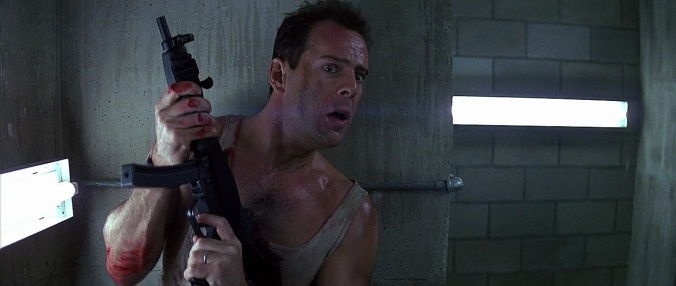
H&K MAGAZINES ARE HOW MUCH?!
It’s Christmas time again, and we’re looking forward to snuggling up with a hot mug of cider and putting on our favorite Christmas movie, Die Hard. It’s got everything a real Christmas story should have; Explosions, one liners, a cheery ending and a laundry list of droolworthy firearms!
We hope you have a merry Christmas this year, and we’ll be resuming posting after the Holiday weekend.
– C Beatty
A Christmas AR
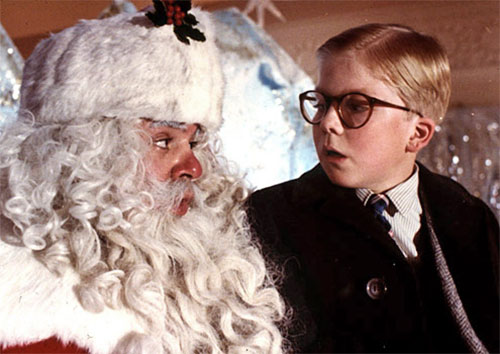
“…and an Aimpoint and a CMC Match Trigger and Magpul stock and a Betamag and…”
These days my christmas wishlist looks like the deranged sanskrit writings of a madman. As I build yet another AR, wondering how I ended up with a list of parts, prices, weights and alternate options in case I change my mind for the 60th time today about which optic, stock and forend my AR “needs”, I wish for a simpler time, when a Red Ryder BB gun was all I wanted. This devolves into thought about how to mount a picatinny rail on the BB gun… my friends think I need help and I’m inclined to agree.
Since I’m building my AR from a stripped receiver, I need a lower parts kit, but this is going to be a hunting AR, so I’m thinking about going for a good quality kit and then swapping out the trigger for a crisp CMC single stage trigger.

I have a full family of wrench stealing elves running around my garage.
I’ve got an upper that I’ve used for varmint shooting, but 5.56 is a little on the anemic side for popping hogs, so I’m going to upgrade to a .300 Blackout barrel. I’ve already picked that part up, I just have to find where Santa’s elves have hidden my torque wrench.
My choices of hand guards are dizzying. The Midwest Industries Lightweight KeyMod hand guard is still on my wish list, I just have to hope I’ve been good enough this year to add it to the already monumental pile of parts I “need”.
And don’t even get me started on optics. The intermediate-range tactical benchmark is the Trijicon ACOG and it works well for hunting hogs in this area too. The Leupold Rifleman Series is a good choice for hunting with an AR-15, and won’t break the bank either.
These days, the AR is adult Legos®. Snap on a new handguard and optic and you have a tactical gun. There was a time when all AR-15 rifles pretty much looked the same. The most exotic thing you would see was an M4 with a shorter barrel and telescoping stock or perhaps the occasional flattop. Today there are so many accessories from so many manufactures that it is easy to personalize your AR-15. Now if you’ll excuse me, I have to find my Red Ryder BB gun to clean out this elf infestation.
– Andy Merciers
The Immortal Rifle

In 1964 Sturm, Ruger & Co. created the 10/22 semi-automatic .22 LR carbine. They had no way of knowing that it would enjoy 5 decades as the perennial best seller and spawn a multi-million dollar cottage industry in aftermarket parts and accessories.
By the late 1970s aftermarket companies like Clark Custom were building heavy barreled 10/22s, which were exquisite in quality and accuracy but cost prohibitive to most sportsmen.
The 1980s saw an array of folding stocks and high capacity magazines along with the occasional muzzle brake. One of the best accessories of the 1980s was the weaver TO-9 scope base which allowed the consumer to use Weaver style rings and most importantly, afforded them the opportunity to deposit the universally hated factory scope base in the nearest trash can.*
The 1990s marked a turning point for the 10/22 aftermarket as the misguided 1994 Assault Weapons Bill put an end to folding stocks and high capacity magazines. Instead, several companies started manufacturing accurate, heavy barrels for around $100. These new heavy barrels required new stocks to accommodate their larger diameter, and just like that, the new focus was affordable accuracy. Performance trigger groups and action parts became the hot new ticket.
In 2004, as we cheered the expiration of the 1994 AWB, manufacturers jumped at the chance to build tactical accessories once again. Today there are so many directions you can go. Several companies offer picatinny rails to better accommodate electronic and tactical scopes. The lines have been blurred between tactical and target 10/22s as there are now tactical style stocks to accommodate heavy barrels. You can even dress up your 10/22 to look like other guns. The options aren’t limitless but it’s close.

Volquartsen Custom Offers a wide variety of upgrades for the 10/22
After 50 years, the Ruger 10/22 is almost chameleon like in its flexibility. In another 50, who knows what new tricks it will have learned.
* Anyone who owned a 10/22 from before 2000 knows what I’m talking about. Folks criticized the factory scope base until Ruger changed the supplied base to a weaver type in the early 2000’s. It was a running joke for 30-odd years.
– Andy Merciers
First Time Buyers
Countless times over the years I have talked to new gun owners who asked me what they need to buy with their new firearm. The first order of business was trying to determine what they had and what they were doing with it. This proved to be the easiest way to figure out what they needed and was in line with the Natchez philosophy of helping the customer find what they need. Since most first-time gun owners buy handguns that’s what I want to address today.
The first thing is the security of the firearm. No matter what, a locking storage solution is important, but if you’ve got children in the house, a secure biometric container for your “bedside” gun is a worthwhile upgrade over a basic security box. If you plan on building a collection then perhaps a full size safe is the right move for you.
The next concern is the transport or carry of the handgun. Are you going to simply carry the gun back and forth to the range or will you be traveling with it? Is the gun going to be lawfully carried on your person? If you are going to carry, does your state specify open or concealed carry? Knowing the rules will prevent you from ordering the wrong product and getting into legal trouble.
Cleaning equipment is one of the most important purchases as being proactive about cleaning keeps your firearm in working condition. Periodic cleanings, even if the gun has not been fired, are a good idea as they prevent rust, especially here in the South. Caliber specific kits are a great starting place and can be added to as needed. Modern clean/lube/preserve (CLP) products are a one product solution, and many are non-toxic.
Anytime you shoot a firearm you should protect your eyes and ears. Shooting glasses don’t need to be fancy or fashionable but they should be rated for protection (ANSI Z87+). You don’t need the latest and greatest electronic hearing protection but a good noise reduction rating (NRR) is important. Most ear-plugs also offer excellent NRR. Some folks that are noise sensitive will want to use both ear-plugs and over-the-ear protection.
To carry your gun and all the related gear you’ll need a range bag. Range bags come in all shapes and sizes to fit your individual needs. It’s a good idea to get one larger than you think you will need to leave room for extra ammunition.
There are many more items worth considering like targets or mag loaders as well as training aids like Snap Caps and Laser Trainers but we’ve pretty much covered the basics. As you get deeper into the hobby, there will be many things you’ll find you can’t live without. The most important thing is to be safe and have fun.
– Andy Merciers, Sales Specialist
Put a little BOO in your BOOM!
Halloween is almost here and what better gun than the legendary Colt Vampire Detective Special to bring a night of spooky scares!
Created in 1972 by Colt Master Engraver Leonard Francolini, the Vampire Detective Special was a tongue-in-cheek tribute to Bram Stoker’s vampire masterpiece. Covered with bats, gargoyles and even the rampant Colt symbol dancing on a coffin, the Vampire Detective special oozes ghastly elegance.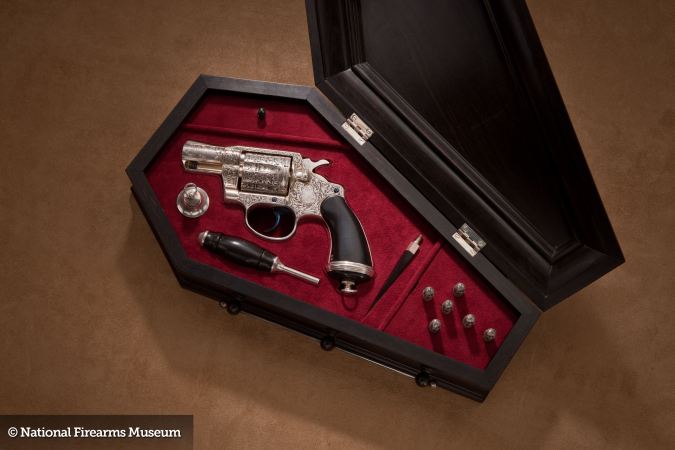
But no Vampire hunter would be complete without his stake and Leonard Froncolini included an ebony stake, holy water vial and, in case that stake didn’t work, 6 sculpted silver bullets.
I’m not about to go trick or treating with an engraved masterpiece of a colt, but I will be bringing a high power flashlight along with a fully charged cell phone (I’m not about to make that mistake twice) and a couple of bandaids for skinned knees.
– C Beatty, Editor
All photos are courtesy and copyright of the National Firearms Museum.
Check out more at the National Firearms Museum!
Max Your Optic Dollar: 6 3-9’s under $200
In my 20 years in sales I have been asked many times to recommend riflescopes. I would ask the standard questions about the rifle, the type of hunting and where they were hunting. Since 3-9 scopes are ideal for most deer hunting in continental United States that’s the power I most often recommend. Then came the money question. For years my recommendations were easy because price pretty much dictated quality. Nowadays it’s not that easy. Riflescopes have gotten better. Today, your optic dollar goes further today than it ever has before and scopes in the $100 to $200 range are better than the best scopes 20 years ago. In no specific order, here’s six of my favorite 3-9’s under $200 that are worth every cent.
Sightron SIH: A very good example of big bang for low bucks. The SIH features super bright multi-coated optics and a fast-focus ocular bell along with one of the best warranties in the business.
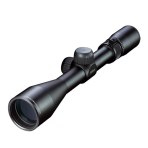 Nikon Buckmaster II: It’s the standard recipe 3-9×40 hunting scope but Nikon does it better than most. Legendary Nikon build quality and low light clarity in an affordable package.
Nikon Buckmaster II: It’s the standard recipe 3-9×40 hunting scope but Nikon does it better than most. Legendary Nikon build quality and low light clarity in an affordable package.
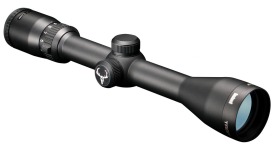 Bushnell Trophy XLT DOA 250 MZ: I love this scope. It sports an impressive 5” of eye relief and the DOA 250MZ reticle making it ideal for Muzzle loaders, slug guns and magnum rifles.
Bushnell Trophy XLT DOA 250 MZ: I love this scope. It sports an impressive 5” of eye relief and the DOA 250MZ reticle making it ideal for Muzzle loaders, slug guns and magnum rifles.
 Redfield Revenge: As a part of the Leupold family, Redfield brings 100 years of optics research and development to the table. The Revenge scopes are all individually shock tested and built like a tank.
Redfield Revenge: As a part of the Leupold family, Redfield brings 100 years of optics research and development to the table. The Revenge scopes are all individually shock tested and built like a tank.
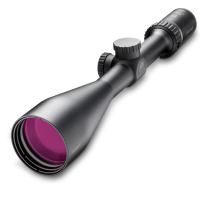 Burris Fullfield E1: The E-1 proves quality ballistic reticles and 50mm objective lenses don’t have to be expensive with its revolutionary cascading windage and elevation dots. Superb quality and Burris’s Forever Warranty make the E-1 a solid choice.
Burris Fullfield E1: The E-1 proves quality ballistic reticles and 50mm objective lenses don’t have to be expensive with its revolutionary cascading windage and elevation dots. Superb quality and Burris’s Forever Warranty make the E-1 a solid choice.
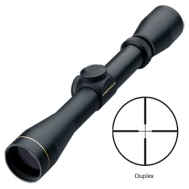 Leupold VX-1: The gold ring is synonymous with quality craftsmanship, superior optical performance and a bulletproof warranty. The VX-1 is designed, engineered and made proudly in the USA.
Leupold VX-1: The gold ring is synonymous with quality craftsmanship, superior optical performance and a bulletproof warranty. The VX-1 is designed, engineered and made proudly in the USA.
– Andy Merciers
